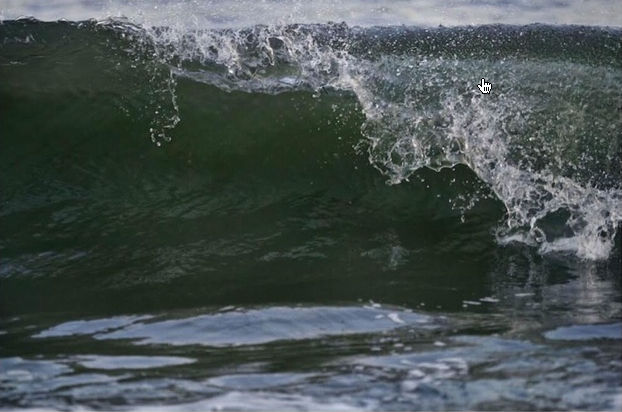Sandra Gottlieb at The New York Hall of Science
It is easy to misconstrue the photographic work of Sandra Gottlieb, which is entirely non-traditional when it comes to its overall theme, yet at the same time it connects with esthetic pleasures usually reserved for painters. The type of movement found in Gottlieb's photographs, the manner by which she captures it, and the appeal it presents, are unique to her process. There is something very removed from time in her work. She is what most would call a nature photographer but her works are not created in order to adorn the pages of National Geographic. They depict the ocean as a canvas, not as a setting or backdrop for people or sea life to enact the usual dramas. A poet might call her a stenographer of the sublime, annotating the randomness of tidal force while allowing it to impose itself upon the moral consciousness of viewers, who will not be able to peer away from the images no matter how overwhelming they may seem. Primal force is her theme, and man's insignificance before it is what usually gets translated into poetic language rather than stand for itself.
In Gottlieb’s photographs there is no attempt at personification, no need for allegory—the ocean is expressive enough all on its own. She has photographed the ocean in several different ways, but in “October Waves” she wanted to avoid any sense of external reality, a focus solely upon the wave sections that are far enough from the shore,mind up close enough to the water’s surface, as to avoid framing it in a physical context that would suggest the romanticism if skyward expanses, which carry their own abstract disposition, or the shoreline, where human agency or at the least competing perspectives, come into play. No people, no birds or even fishes are in evidence, only water, and the roiling, dashing, bubbling dance it makes covering two thirds of the earth’s surface. These scenes are so divorced from our expectations of nature that we are hard pressed to come up with metaphors to aid us. But we don't need to translate Gottlieb’s subject, only to make its material our especial focus. In 30 color images she traces the waves from a mysterious point where the swells originate, and through every gesture, to where they finally give up their energy and fall in the shore like defeated beasts, to be absorbed back into the ground and be replaced by an endless continuum of waves, all feeding the energy of the earth, a watery and immense motor. The beauty of this we call the sublime because we liken it to an unglimpsed godhead, but like time itself, the tide has no memory, it only moves on.


Comments